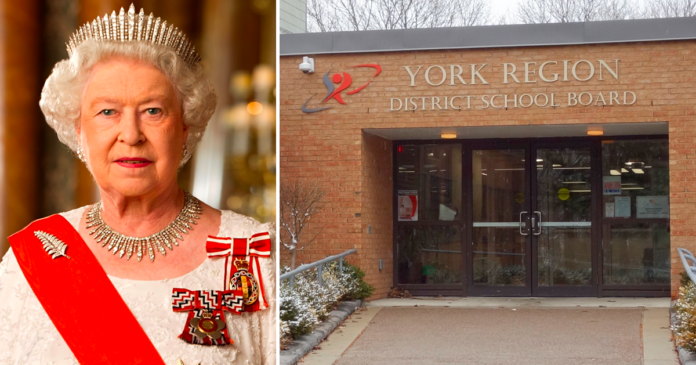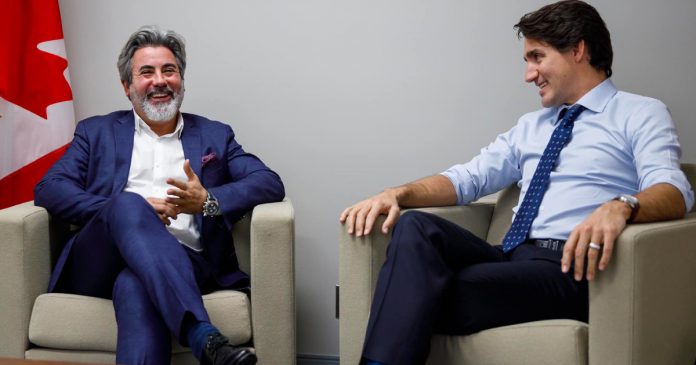Hymie Rubenstein is editor of The REAL Indian Residential Schools newsletter and a retired professor of anthropology, The University of Manitoba
Since the May 27, 2021, media release by the Kamloops Indian Band of “… the confirmation of the remains of 215 children [buried in unmarked graves] who were students of the Kamloops Indian Residential School,” similar announcements across the country have come fast and furious.
This macabre fascination with unmarked graves and missing students quickly accelerated after the Trudeau government’s Aug. 10, 2021 announcement of $320 million “in additional [to the millions already promised] support for Indigenous-led, Survivor-centric and culturally sensitive initiatives and investments to help Indigenous communities respond to and heal from the ongoing impacts of residential schools,” including “… to research and locate burial sites as well as to commemorate and memorialize the children who died at residential schools.”
Including the Kamloops site, 34 reputedly unmarked grave sites and potential burial locales have been identified since May 2021. Nevertheless, not a single body associated with any residential school has been recovered, let alone forensically examined. Although five of the six pre-Kamloops searches found human remains, none represented missing Indian Residential School [IRS] students or other missing persons.

Still, none of these negative findings have put a damper on more scavenger hunts for unmarked graves whose only prize has been the money earned and jobs created from the search itself along with generous funding for ancillary activities like healing and commemoration. This applies in spades to a Mar. 3, 2022 CBC story about a search at the site of a former northern Alberta Indian Residential school called Holy Angels.
This Roman Catholic school, demolished in 1974, was on the Fort Chipewyan Indian Reserve 730 kilometres north of Edmonton and is said to be the last whereabouts of 89 “missing” children representing at least four different aboriginal groups who attended the school between 1880 and 1953.
This search has just been accompanied by the burning to the ground of the Nativity of the Blessed Virgin Roman Catholic Church associated with the school in the early morning hours of Aug. 25, 2022. Like the dozens of Catholic and other churches that were also destroyed following the revelations at Kamloops, this was termed by the RCMP as a suspected case of arson, a reasonable assertion given the accusations of student abuse – none proven — at the Holy Angels school.

Both ambivalence about and bitterness towards the Catholic Church remained. As the Edmonton Journal reported:
“Plenty of elders in the community witnessed and endured physical and sexual abuse at the school. Indigenous and educational leaders in the community have said for years that trauma was passed down to other generations…. Alice Rigney, an ACFN [Athabasca Chipewyan First Nation] elder, called the church’s destruction an “attack on the community’s history.” Rigney was another survivor of physical and sexual abuse during her 10 years at the Holy Angels Residential School. She remembers cheering when she watched the demolition of the residential school, calling it ‘a place of Hell.’”
Why is this band searching for “potential unmarked graves” containing bodies of students who attended the Holy Angels Residential School when no children are being searched for by any of their relatives? How can children be missing when nobody knows their names or is looking for them?
Also, why was “An archaeological team from the University of Alberta … hired to search the former school grounds for potential unmarked graves….” when there is no evidence to suggest that students were secretly buried?
Yes, the National Centre for Truth and Reconciliation (NCTR), the successor to the Truth and Reconciliation Commission (TRC) charged with reporting on the history, operation, and legacy of Canada’s Indian Residential Schools (IRS), lists the names and date of death of the 89 Holy Angels IRS students on their Memorial Register who are said to have died at the school or within a year of their discharge.
According to the NCTR, “Following the direction provided by Survivors [i.e., any indigenous person who attended an IRS] during the community engagements held in 2018 and at the National Gathering of Elders, only the names and dates of death will be public.”
But this directive did not prevent the NCTR from publishing, in summary fashion, the cause of death and place of burial for each school as it did for the schools taken together. Not doing so helped precipitate the trauma and rage felt by indigenous people across the land resulting in church burnings like the Fort Chipewyan one.
To this day, it remains unclear how hard the NCTR has been looking for the fate of the “missing children” in publicly available archival sources. If it has been working diligently on this issue, no detailed findings have been released to the public or the affected communities since 2015. This would be unconscionable.
What is clear, however, is that whenever independent researchers like Nina Green undertook such searches at their own expense, most were quickly found “buried” in publicly-accessible federal and provincial archives, their physical remains nearly always interred in band cemeteries.
Other research has shown that so-called “students who never returned” from their residential schools were often sent home when terminally ill. If they died in the school infirmary, their remains were transported to their reserves whenever this was feasible. And if they died in a nearby hospital, they were often interred on its grounds or in a nearby cemetery if they could not be sent home.
But the best evidence that there are no missing children comes from TRC/NCTR records and from our understanding of traditional indigenous mortuary practice.
Of the 89 memorialized Holy Angels children, only 14 (16%). died less than 80 years ago. The last student died in 1953, 69 years ago. Like most peoples, whether literate or not, the Chippewa/Ojibway/Métis/Cree ethnic groups whose children attended Holy Angels did not maintain detailed multi-generational genealogies. Together with the widespread neglect of existing reserve cemeteries full of long-decayed wooden markers that were never replaced, this helps explain why no band members are frantically looking for missing ancestors who died more than seven decades ago.

In sum, there is no proof that any student listed on the Memorial Register for the Holy Angels or any other IRS was not appropriately buried or that their death certificates were not signed by the proper authorities.
Nor is there evidence other than mischievous speculation rooted in ghost stories or groundless conspiracy theories of a single child murdered and tossed into an unmarked grave in the dead of night at any government-supported IRS during their 113-year period of operation.
Still, so long as the money keeps flowing, there will be no incentive to stop this lucrative search for bodiless burial sites.
Hymie Rubenstein is editor of The REAL Indian Residential Schools newsletter and a retired professor of anthropology, The University of Manitoba

























